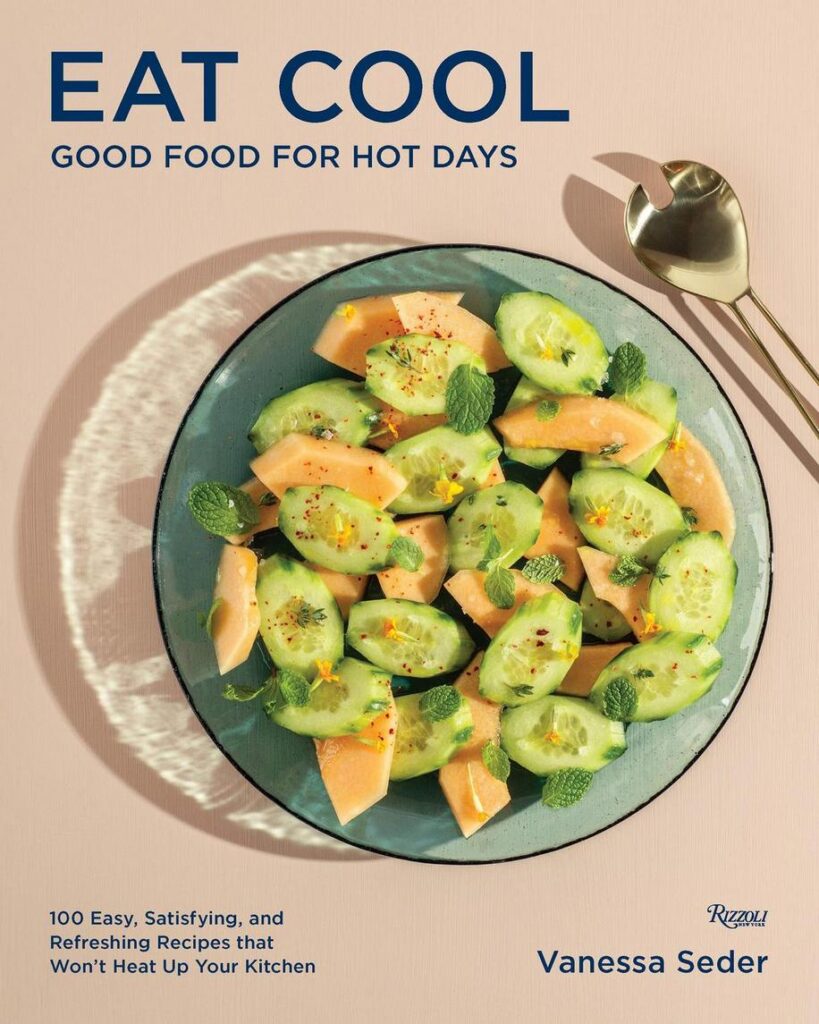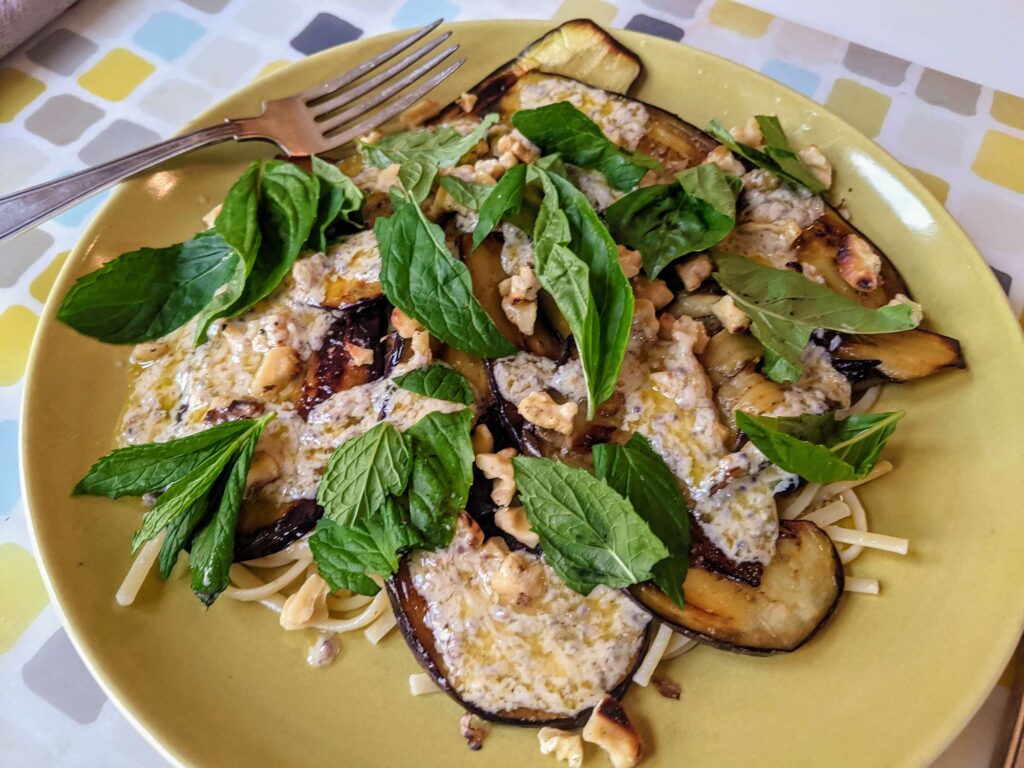
We confess that when we saw advance copy on Eat Cool: Good Food for Hot Days (Rizzoli $39.95) back in February, we were more inclined to stews, braises, roasts, and similar rib-sticking fare for a frigid Boston. Then the mercury began to climb into the 80s and the humidity started to rise from comfortable to steamy to downright tropical.
Suddenly Eat Cool sounded downright enthralling. The sub-subtitle of the book said exactly what we wanted to hear: ‶100 easy, satisfying and refreshing recipes that won’t heat up your kitchen.″ Author Vanessa Seder is a chef and cooking teacher with a bent toward simple family-friendly recipes that look more labor-intensive than they are. She gives a lot of straight-from-the-shoulder advice about technique, too. Best of all, most dishes can be made ahead to serve chilled or at room temperature. And, like most Rizzoli books, it’s beautifully photographed and lovingly designed.
After months of grocery delivery interspersed with parking-lot pickup, we’ve started shopping in markets again. So naturally we fell for some dainty Italian eggplants raised indoors in the Eastern Townships between Montreal and Vermont. The skins were paper thin and the flesh was firm and tasty. Conveniently enough, the mint outside our back door was just starting to unfold. With a few additional ingredients, dinner practically made itself, thanks to the following recipe by Seder. Our only alteration was to serve it on top of a small tangle of linguine.

SEARED EGGPLANT WITH MINT, BASIL, AND WALNUTS IN YOGURT OLIVE OIL DRESSING
SERVES 4 | ACTIVE TIME: 25 MINUTES | TOTAL TIME: 25 MINUTES
Its glamorous and vaguely sinister-sounding name notwithstanding, the nightshade family boasts several of my favorite fruits and vegetables, including bell peppers, tomatoes, and eggplants, which hit peak ripeness during the hot and humid late summer months. Keen eggplant spotters at farmers markets during August will discover alternate colors—white, green, and orange, for example—as well as shapes and sizes that run the gamut beyond the familiar aubergine oblong. The great thing about eggplant is that its mild flavors and satisfying texture take on aspects of whatever you do to or put with it. Here, that’s a delicious array of flavors, from the sweet (honey) to the sour-tangy (yogurt, mustard, vinegar), to the fragrant (herbs, garlic), to the smoky (char from the grill).
- 1/4 cup whole milk plain yogurt
- 3 tablespoons extra virgin olive oil, plus more for drizzling
- 1 tablespoon grainy mustard
- 1 teaspoon white wine vinegar
- 1 teaspoon honey
- 1 small clove garlic, peeled and minced
- 1/4 teaspoon Aleppo chile flakes
- Flaky sea salt
- Freshly ground black pepper
- 4 to 5 small eggplants (about 1 3/4 pounds total), such as Italian, graffiti, or any variety that looks good or is in season
- 3/4 cup raw walnut halves
- 1/2 cup fresh basil leaves, torn if large
- 1/2 cup fresh mint leaves, torn if large
In a medium bowl, whisk together the yogurt, 3 tablespoons olive oil, the mustard, vinegar, honey, garlic, and chile flakes. Season with salt and pepper and set aside.
Cut the stem ends off the eggplants and cut vertically into 1/4-inch-thick slices. Set aside.
Heat a large cast-iron skillet over medium-high heat and cook the walnuts, stirring a few times, until toasted and almost charred in parts, about 4 minutes. Remove to a small bowl and set aside.
Drizzle the eggplant slices lightly with olive oil. With the heat still on medium-high, add the slices to the skillet in batches and let cook, flipping halfway through cooking, until charred in parts, 2 to 3 minutes per side. Transfer the eggplant to large plates or a serving platter and sprinkle very lightly with salt. Continue cooking the remaining eggplant, placing it on the platter, and sprinkling with salt until all the eggplant is cooked.
Drizzle the eggplant all over with the dressing. Use your hands to break and crumble the walnuts over the top. Sprinkle everywhere with the basil and mint. Serve warm or at room temperature within a few hours (garnish just before serving).
